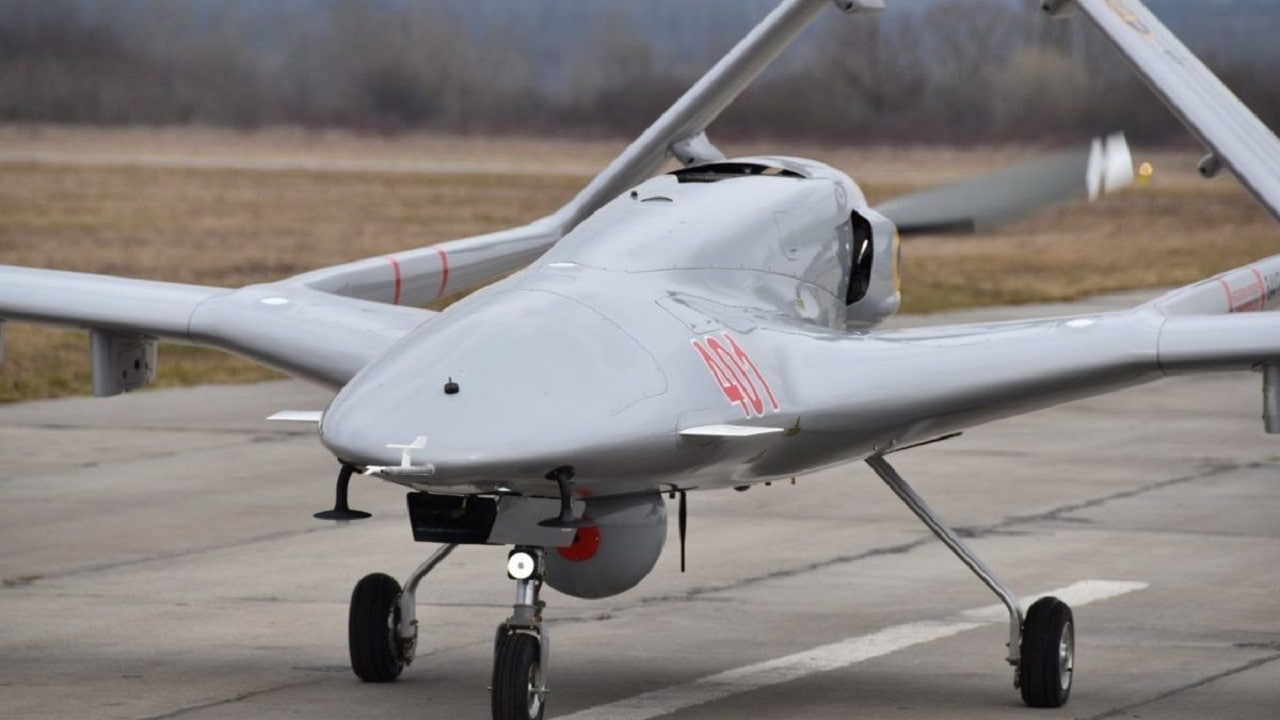The explosive success of the Bayraktar TB2 drone may have cooled off since the shift of fighting to the Donbas region in Ukraine. The Russian military has recently consolidated its air defense systems in the area and learned some lessons about the TB2 Turkish-made drone. This unmanned craft has dominated the battlefield by repeatedly blowing up Russia’s military hardware behind enemy lines. Russia has looked for answers to mitigate the threat and they may have found a recipe to clip the wings of the TB2.
Russia Turning Its Sights to Destroying TB2s
Russia has concentrated more of its S-300 and S-400 surface-to-air missile systems in Luhansk and Donetsk. A Ukrainian fighter pilot interviewed by Foreign Policy magazine is worried the TB2 has met its match with the air defenders.
“They (TB2s) were very useful and important in the very first days, stopping those columns, but now that they’ve built up good air defenses, they’re almost useless.” Ukrainian troops are limiting the use of Bayraktars to “rare special operations and attack missions,” the pilot said.
TB2s Have Dealt in Destruction
The TB2 has been dominant by destroying Russia’s infantry fighting vehicles, tanks, towed artillery, multiple-launch rocket systems, anti-aircraft systems, helicopters, command posts, supply trucks, and even some naval vessels, according to Oryx, an open-source intelligence site that tracks the war.
History of the Bayraktar Drone
The TB2 was unveiled in 2007 and delivered to the Turkish military in 2014. The Turks used it to hobble insurgent Kurdish fighters in northern Iraq and Syria. The TB2 then made a splash in the conflict in Nagorno-Karabakh between Armenia and Azerbaijan in 2020. The TB2 flies slowly but it has ample loitering time and range to find, fix, and destroy targets with its 620-pound payload. It can also collect intelligence and targeting data to help friendly forces destroy targets with fighters or cruise missiles. It was the Bayraktar that may have provided the critical target coordinates to guide the Harpoon anti-ship missiles that crushed a Russian rescue tug on June 17.
It’s More Dangerous to Fly Them
The Ukrainians began the fighting with 30 TB2s and have lost eight in combat. But Russian air defense systems are now bunched in the Donbas creating a missile umbrella to threaten the TB2’s heretofore unfettered access to striking Russian assets. The TB2 must now fly in contested air space rather than patrolling unchallenged over Russian supply lines.
Russia Is Learning About Counter-Drone Warfare
Vikram Mittal of Forbes has recounted what Russia has done to circumvent the TB2. “The Russians first shot down a TB2 drone in mid-March; they have had ample time to study the drone and find vulnerabilities. By identifying the transmission frequencies and other electromagnetic signatures, the Russian military can more effectively detect and target the drones. Furthermore, the Russians could potentially jam the control signals to the drone as well,” Mittal wrote.
The TB2 Has Made a Loud Statement
Has Russia evened the score against the TB2? Not quite. Drones are replaceable. Other countries can donate them to the Ukrainians. Russia will have to employ surface-to-air missiles on unmanned systems that reduce the number of interceptors that can be used against Ukrainian fighter planes engaging in close air support. TB2s can also be used in other areas of operations such as Snake Island in the Black Sea.
The TB2 should not be counted out yet. The Ukrainians may limit their flights over Donbas, but their earlier success has been extraordinary. The defenders may also change their drone tactics by flying lower-risk recon missions that send location coordinates to field artillery units and special operations forces instead of conducting their own attacks. The TB2 is here to stay, and it seems Vladimir Putin’s forces are afraid of it. The next step for Ukrainian President Volodymyr Zelenskyy is to order more.
Now serving as 1945’s Defense and National Security Editor, Brent M. Eastwood, PhD, is the author of Humans, Machines, and Data: Future Trends in Warfare. He is an Emerging Threats expert and former U.S. Army Infantry officer. You can follow him on Twitter @BMEastwood.

